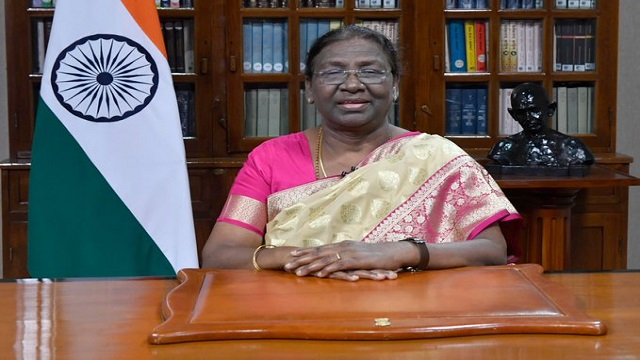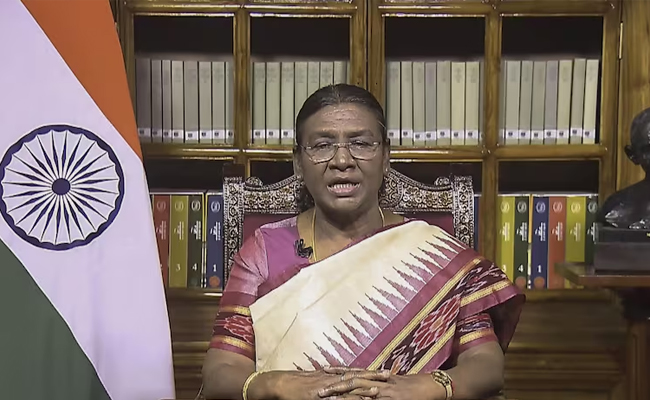The governor is supposed to be an apolitical head of state who follows the state Council of Ministers’ recommendations. What is the connection between the state government and the governor?
On Saturday, July 28, President Droupadi Murmu named governors for the states of Rajasthan, Telangana, Maharashtra, Punjab, Sikkim, Meghalaya, Assam, Jharkhand, and Chhattisgarh. Lakshman Prasad Acharya, the governor of Assam, has also been handed responsibility for Manipur.

State Governors are chosen by the President of India and serve as the Center’s delegates. This is what the post says, based on the Indian Constitution, and the reasons why there are moments when tensions arise between state administration and governors.
The Indian Constitution states in Article 153 that “There shall be a Governor for each State.” The 1956 Constitutional Amendment stated that “nothing in this article shall prevent the appointment of the same person as Governor for two or more States,” a few years after the document’s adoption.
“Governor of a State shall be appointed by the President by warrant under his hand and seal,” states Article 155. The Governor “shall hold office during the pleasure of the President,” as stated in Article 156, however his normal tenure of office is five years.
The Governor must resign if the President expresses her disapproval before the five years have passed. The Governor is essentially appointed and dismissed by the federal government since the President works with the assistance and advice of the Union Council of Ministers and the Prime Minister.
What are the requirements to become a governor of a state?
The Governor’s qualifications and terms of service are outlined in Articles 157 and 158. In addition to being an Indian citizen, the governor must be at least 35 years old. The governor cannot occupy any other position of profit, nor can he serve in the state legislature or as a member of Parliament.
What is the connection between the state government and the governor?
The governor is supposed to be an apolitical head of state who follows the state Council of Ministers’ recommendations. The Chief Minister will lead a Council of Ministers tasked with assisting the Governor in carrying out his duties, “save to the extent that he is by or under this Constitution required to exercise his functions or any of them in his discretion,” according to Article 163.
The Governor’s position is very important because of the powers granted to him by the Constitution. These include the ability to approve or disapprove legislation passed by the state legislature, to decide how long a party has to prove its majority in the state Assembly, and to decide which party, in the event of a tie in an election, should be called to prove its majority.
Governors have been accused of working as “agents of the Center” by state governments, particularly the opposition ones, over the years since it has been perceived that they do so at the behest of the federal government that is in power at the time.

Furthermore, there are no provisions in the Constitution governing how the state and the governor must interact openly when they hold divergent views. Traditionally, respect for one another’s limits has served as guidance for this. However, there have recently been contentious and harsh discussions between state governments and governors, with the chief ministers of Tamil Nadu and Kerala accusing governors like R N Ravi and Arif Mohammed Khan of engaging in partisanship.
However, why does this kind of conflict arise?
The Indian Express has previously quoted constitutional scholar Dr. Faizan Mustafa as saying, “Because Governors have become political appointees.” “The Governor was intended to be apolitical by the Constituent Assembly. However, politicians become governors before stepping down to run for office.
According to Vidhi Centre for Legal Policy constitutional scholar Alok Prasanna, “The CM is answerable to the people.” But the Center is the only entity to which the Governor is answerable. The truth is that there is a fundamental flaw in the Constitution, despite your best efforts to hide it behind concepts of constitutional morality and principles.
In fact, there is no mechanism in place to remove the governor from office, and in the event of an especially contentious and protracted dispute between the national and state governments, the federal government may utilize Raj Bhavan to cause the state’s troubles indefinitely for a maximum of five years.
The Atal Bihari Vajpayee government established the National Commission to Review the Working of the Constitution in 2001, which noted that “there is the apprehension that he is likely to act in accordance with the instructions, if any, received from the Union Council of Ministers in matters where the Central Government and the State Government do not see eye to eye. This is because the Governor owes his appointment and his continuation in office to the Union Council of Ministers.” In fact, the Governors are derisively referred to as “agents of the Center” these days.








